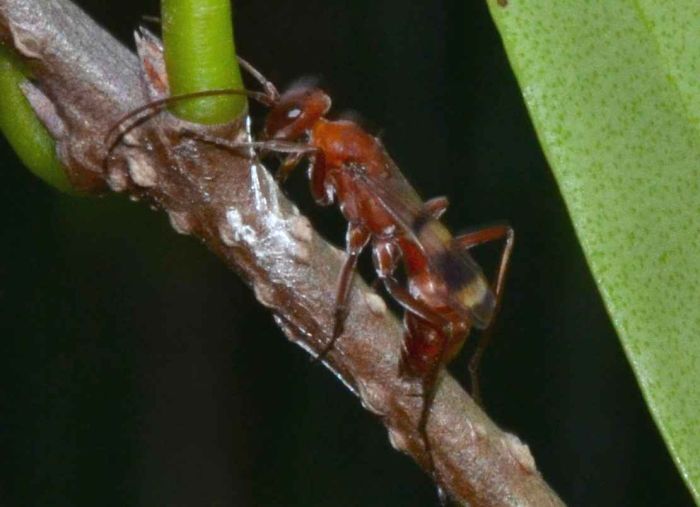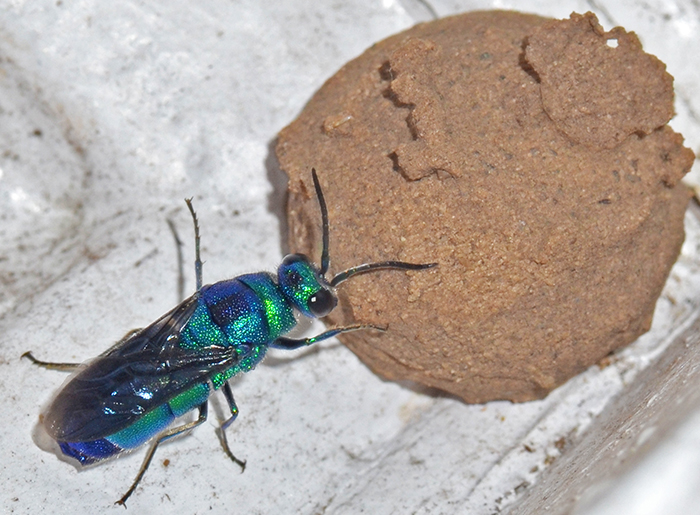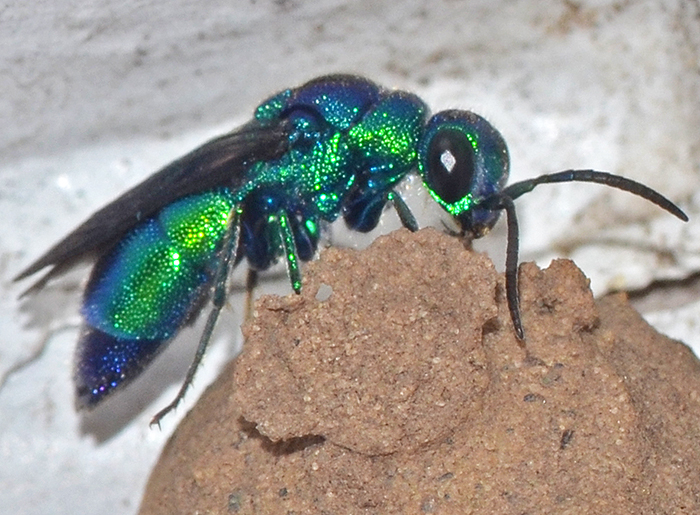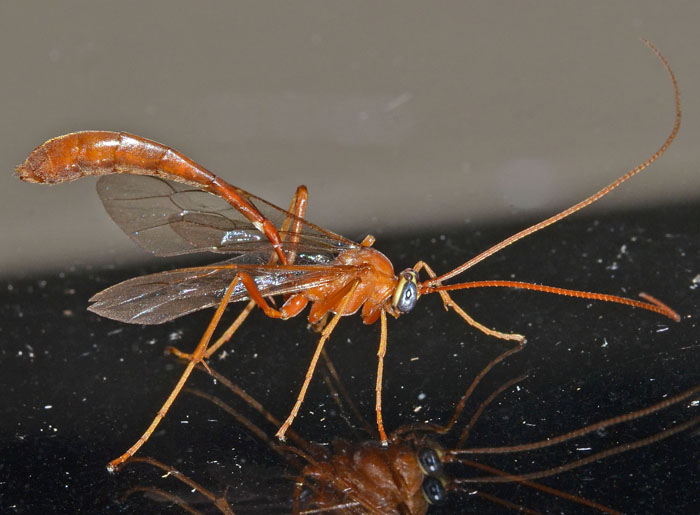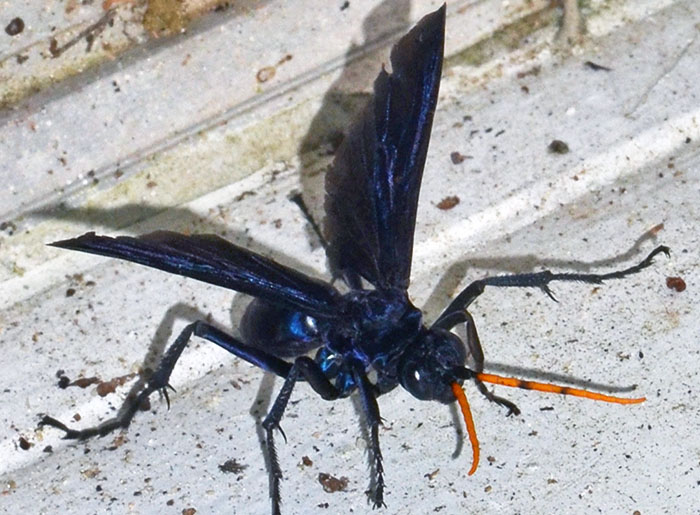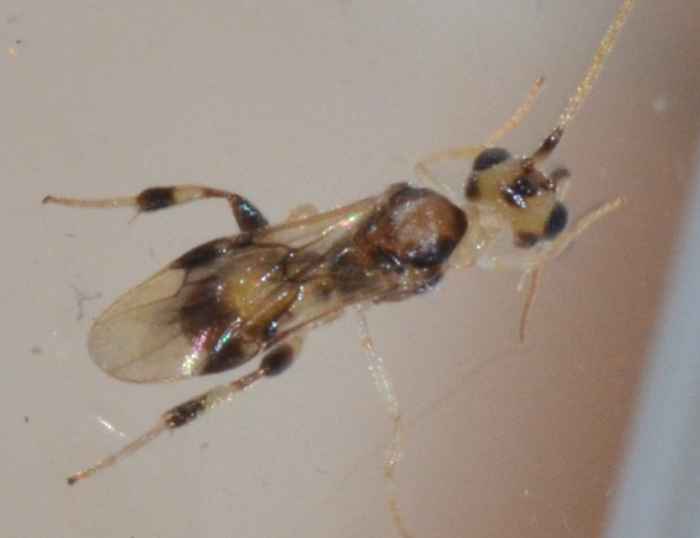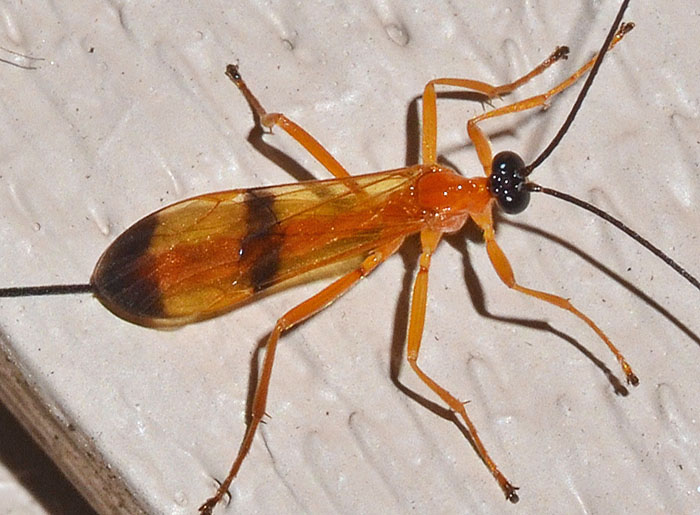 Acrotaphus wiltii ♀. | This wasp is a major foe of the arabesque orb weaver, Neoscona arabesca. The wasp stings the spider to briefly paralyze it while she lays a single egg on it. The larva is an external parasite. Acrotaphus wiltii is the only slender species with black bands on orange to yellowish wings.
bug guide (this photo): http://bugguide.net/node/view/1085672 | ||
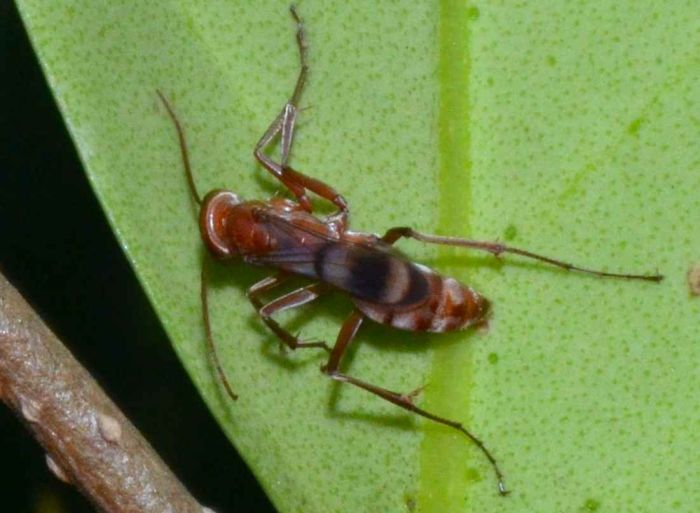 Ageniella sp. (Spider Wasp). | This spider wasp belongs to the rather larger genus Ageniella which has 35 species in North America. A. conflicta has striped wings like this wasp. It reminded me of a velvet ant but that's wrong (like many of my guesses). The small photo shows a side view of the same specimen.
bug guide (this photo): http://bugguide.net/node/view/559278 | ||
 Aleiodes sp. (Mummy-wasp). | Over 200 species in this genus. Mummy wasps attack leaf-feeding caterpillars and mummify the victim. This unique method of parasitism leaves the caterpillar intact and identifiable while the wasp larva feeds and eventually pupates inside the caterpillar. bug guide (this photo): http://bugguide.net/node/view/634174 | ||
 Andrena sp.. | Not a good photo but anyway, I've rescued this Mining Bee from our pool. It has been identified as Andrena which includes over 450 species (47 subgenera) in North America alone. bug guide (this photo): http://bugguide.net/node/view/1206566 | ||
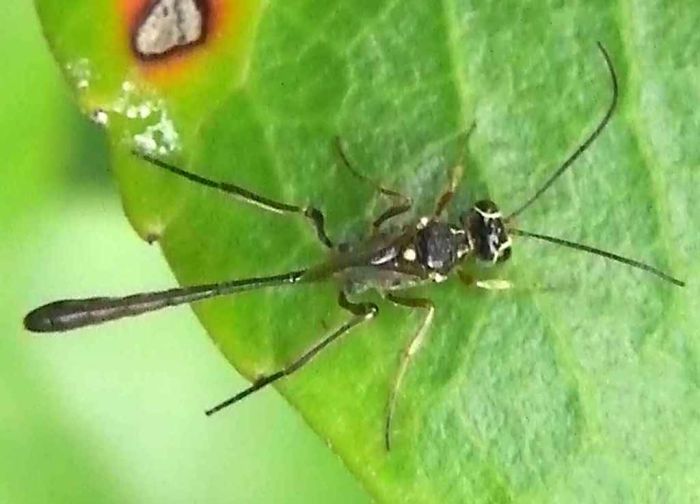 Anomalon sp. (Ichneumon Wasp). | This insect was so small that, before looking at the photo, I had no idea that it could be a wasp. More precisely it's a ichneumon wasp. They are slender with long antennae, parasitic, and have thousands of species in North America. This one belongs to the genus Anomalon which has only 12 species in the US. A bug guide expert determined that it is a male. bug guide (this photo): http://bugguide.net/node/view/545629 Tom Murray: http://www.pbase.com/tmurray74/ichneumon_subfamily_anomaloninae BBC video: http://www.youtube.com/watch?v=SLvuevf__Ok | ||
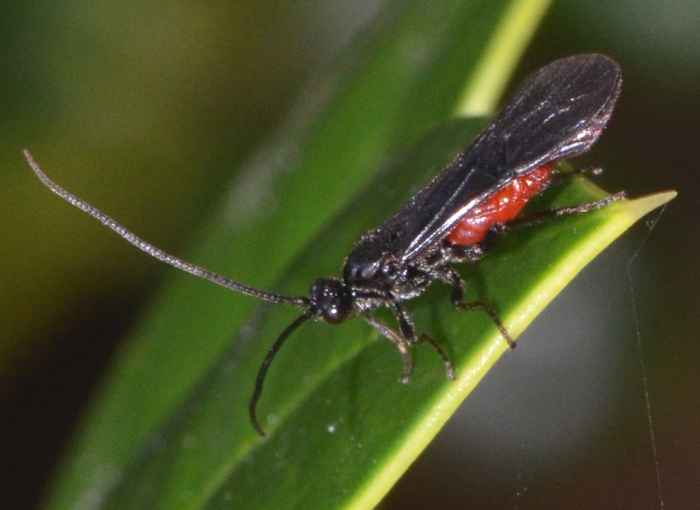 Atanycolus sp. (?) (Braconid Wasp (nonspec.)). | This is a Braconid wasp, possibly in Atanycolus which has 36 species in North America. This genus is a common one within its subfamily but the bugguide warns that it is "next to impossible to identify this genus from images alone". bug guide (this photo): http://bugguide.net/node/view/571805 | ||
 Augochlora sp. (pura?) (Sweat Bee). | One busy "sweat bee" ...
The 'green metallic bee' belongs to the very large family Halictidae. Perhaps it is Augochlora pura but I'm not sure. All sweat bees are attracted by sweat (to lick off salt) and can sting. I love the Wikipedia statement that their "sting is only rated a 1.0 on the Schmidt Sting Pain Index, making it almost painless." wikipedia: http://en.wikipedia.org/wiki/Halictidae bug guide: http://bugguide.net/node/view/128 discoverlife: http://www.discoverlife.org/mp/20q?guide=Bee_genera: | ||
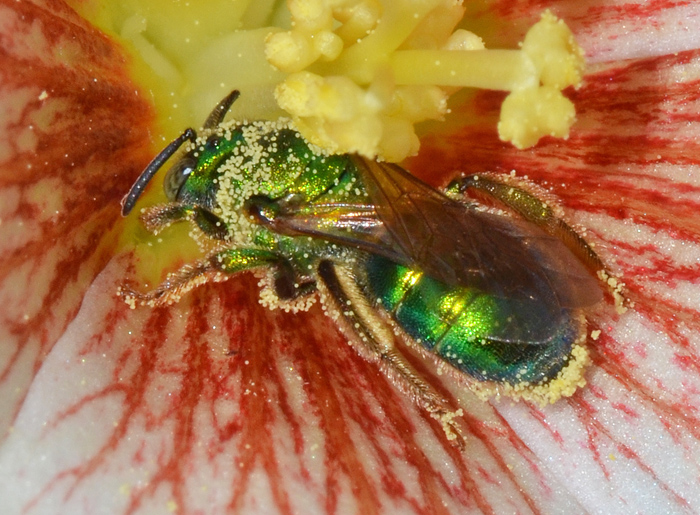 Augochloropsis sp. ♀. | Hard to believe that an expert on bugguide.net could identify this sweat bee for me. The flower is from a tung oil tree Vernicia fordii which are common in our neighborhood. In 1905 the Dept. of Agriculture introduced the tree in Florida and other Gulf states. Later the flourishing American tung oil industry was wiped out by frost and hurricanes and the plantations never recovered. Today the tree is listed as an invasive species. Unfortunately they are also very poisonous and can cause rash. bug guide (this photo): http://bugguide.net/node/view/1206692 wikipedia (for the flower): https://en.wikipedia.org/wiki/Vernicia_fordii | ||
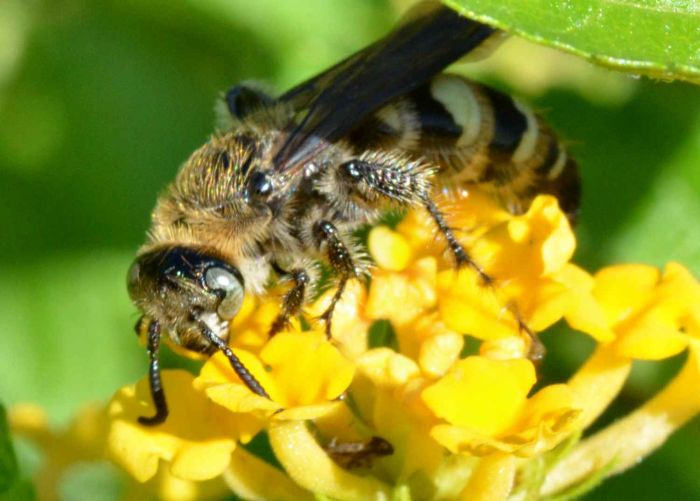 Campsomeris plumipes (Scarab-Hunter Wasp) ♀. | A scoliid wasp: Campsomeris plumipes or scarab-hunter wasp. The bug guide lists five genera for this family. They are predators on white grubs (Scarabaeidae), which they use as food for their offspring. The adults--as can be seen--nectar on flowers. bug guide (this photo): http://bugguide.net/node/view/548323 UF: http://edis.ifas.ufl.edu/in745 | ||
 Cerceris sp.. | This small wasp belongs probably to the genus Cerceris which includes over 80 different species in the US. Most of them prey on adult beetles. bug guide: http://bugguide.net/node/view/12521 | ||
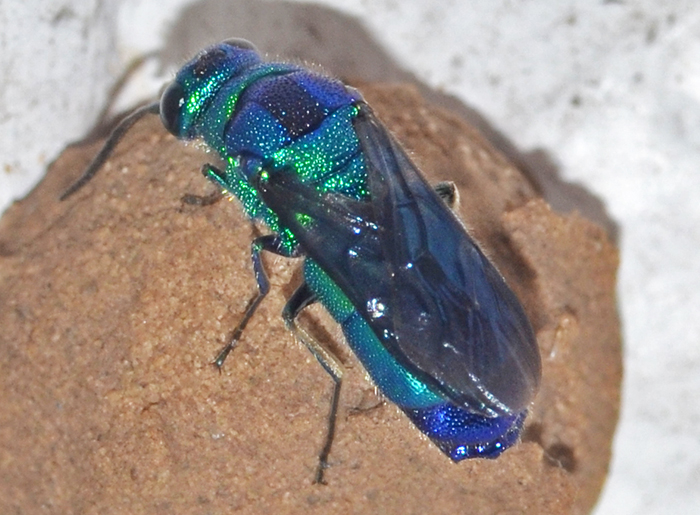 Chrysis angolensis. | Native to the Old World, where it is widespread, this cuckoo wasp species arrived in the US probably during World War II. Like other wasps in this family, it lays eggs in the nests of unrelated host species. C. angolensis specifically parasitizes the mud nests of Sceliphron caementarium which I posted here.
bug guide (these photos): https://bugguide.net/node/view/1564987 | ||
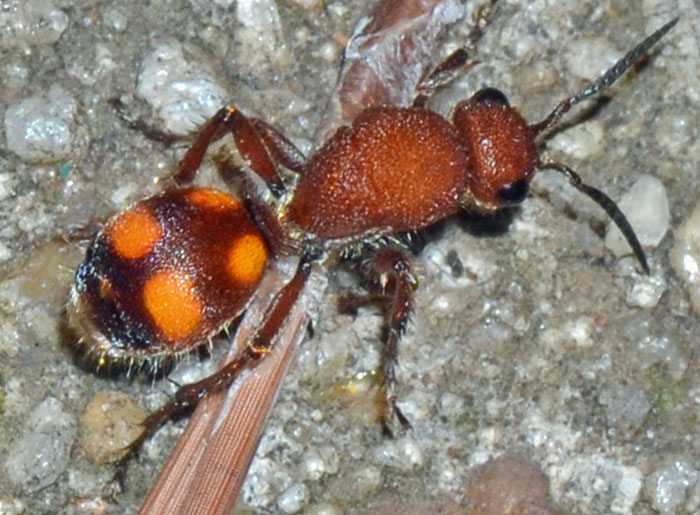 Dasymutilla quadriguttata. | This is probably the first velvet ant that I have ever seen. It crossed our parking place at high speed and it was quite challenging to take this picture. Let me add that females can inflict a painful sting. They are also called "Cow Killers". Notice that this family belongs to the wasps, although especially the wingless females clearly resemble large ants. Velvet ants are solitary and typically hairy.
bug guide (this photo): http://bugguide.net/node/view/970193 | ||
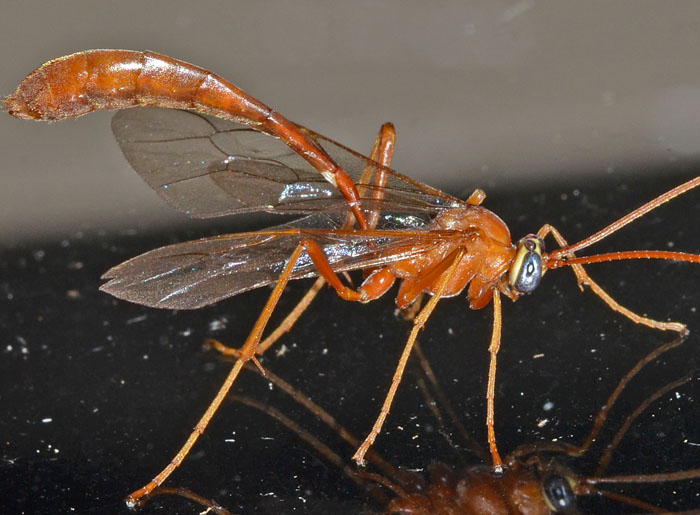 Enicospilus sp.. | A really big Ichneumon Wasp with a somewhat pre-historic appearance. The wasp was attracted to our porch lights and then rested on our living room window for a while. The genus Enicospilus has twelve species in North America. This one seems to belong to the americanus group. A high-resolution version of the photo is available here.
bug guide (this photo): http://bugguide.net/node/view/986757 | ||
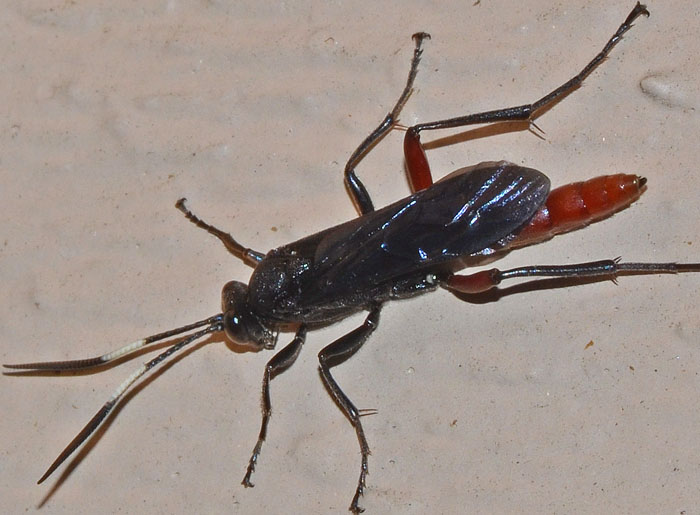 Limonethe maurator ♀. | I couldn't find any information on this wasp with the exception of contradictory information on its host insects. This specimen was attracted to attracted to our porch lights. bug guide (this photo): http://bugguide.net/node/view/1078465 | ||
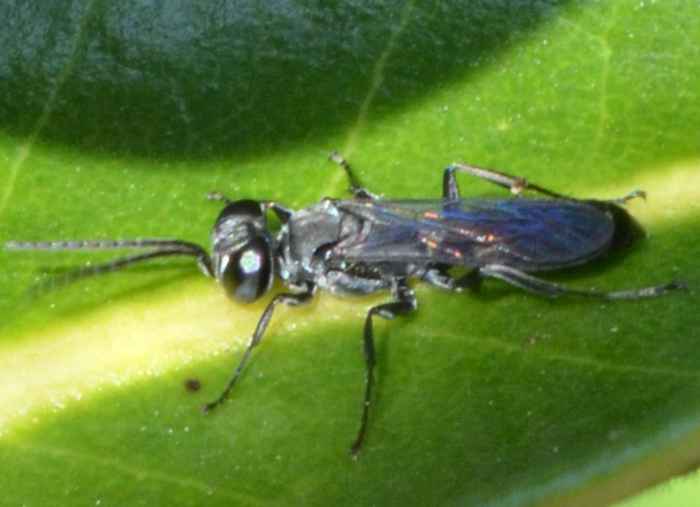 Liris sp. (Square-Headed Wasp (nonspecific)). | Not a good photo but the bugguide folks identified it as a Square-Headed Wasp (Liris sp.). North America has 15 (24?) species in this genus. L. argentatus is a shiny black species that is widespread in the US (p. 27, third link). bug guide (this photo): http://bugguide.net/node/view/565884 UF: http://natl.ifas.ufl.edu/Wasps2.htm K. V. Krombein Revision of North American Liris Fabricius (Smithsonian, 1984): http://alturl.com/4ygg5 | ||
 Meteorus sp. ♀. | A small Braconid wasp. The genus Meteorus has 40 species in the North America and at least 332 species worldwide. bug guide (this photo): https://bugguide.net/node/view/1659539 H. Aguirre et al., ZooKeys 489, 33, 2015: https://zookeys.pensoft.net/articles.php?id=4942 | ||
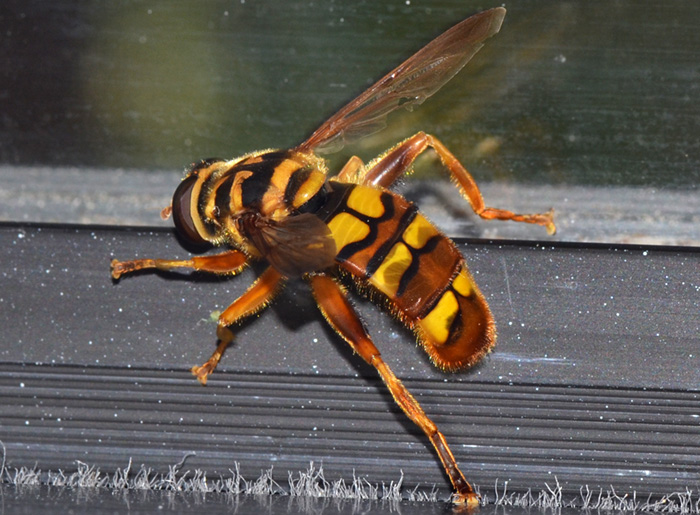 Milesia virginiensis (Yellowjacket Hover Fly). | Since we have yellowjackets, I was pretty convinced that this is one of those dangerous fellas. However, it turned out to be only a big hover fly that mimics the Southern Yellowjacket. Citing from the field guide by Eaton&Kaufman: "Flies aggressively and buzzes like a hornet. In the south, sometimes called the '[good] news bee' for its habit of hovering in front of a person "giving the news". It is also said to be good luck if one can get the insect to perch on a finger, no doubt because this is difficult to do."
bug guide (this photo): https://bugguide.net/node/view/1730385 | ||
 Myzinum sp. (Tiphiid Wasp) ♀. | There are ten species of Myzinum in North America. Females are more robust and have curled antennae that are shorter than in their male counterparts. Females lay one egg per provision host (typically soil-dwelling white grubs). First the larvae feed on non-essential tissues, later on essential organs killing the host.
bug guide (this photo): http://bugguide.net/node/view/557361 | ||
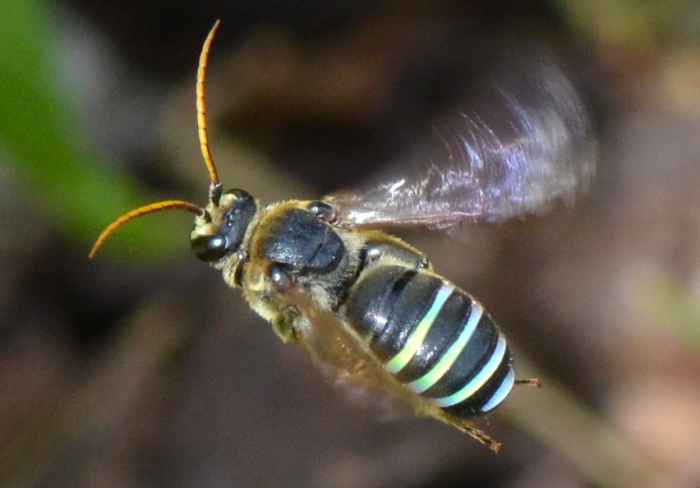 Nomia sp. (Alkali Bee). | This sweat bee is an Alkali Bee (Nomia sp.). In Greek mythology, Nomia is a daughter of Zeus and a beautiful though jealous naiad. Please have a look at the second photo and the video. They show the bee attacking a colleague, which in my opinion belongs to another species (the stripes are more yellowish than green). Unfortunately I have no idea what was going on but the attacks repeated several times. The "victim" didn't show much of a response.
 A short video is available on my YouTube channel. A short video is available on my YouTube channel.bug guide (these photos): http://bugguide.net/node/view/572643 | ||
 Pepsis menechma (Elegant Tarantula Hawk) ♀. | Elegant Tarantula Hawks are widespread in the eastern half of the US and hence typically do not prey on tarantulas but females rather paralyze trapdoor spiders for provisioning their nests. Adults take nectar. The large wasp is black with metallic bluish tint and orange antennae. Although rather docile, tarantula hawks in general have among the most painful stings on the planet.
bug guide (these photos): https://bugguide.net/node/view/1579894 National History Museum, Hertfordshire, UK: https://tinyurl.com/EmilyOsterloff2017 | ||
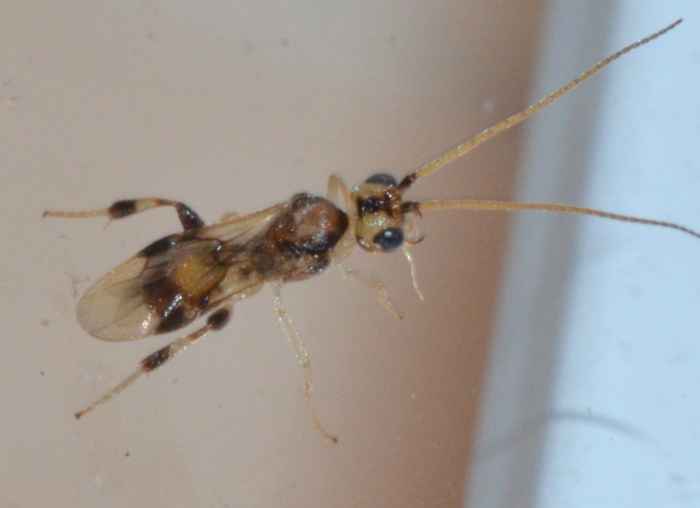 Phanerotoma sp.. | The genus Phanerotoma has 14 species in North America. The wasps in this subfamily parasitize caterpillars of Lepidoptera, especially Pyraloidea and Tortricoidea. Their antennae have 23 segments. The three photos show the same specimen.
bug guide (this photo): http://bugguide.net/node/view/596408 | ||
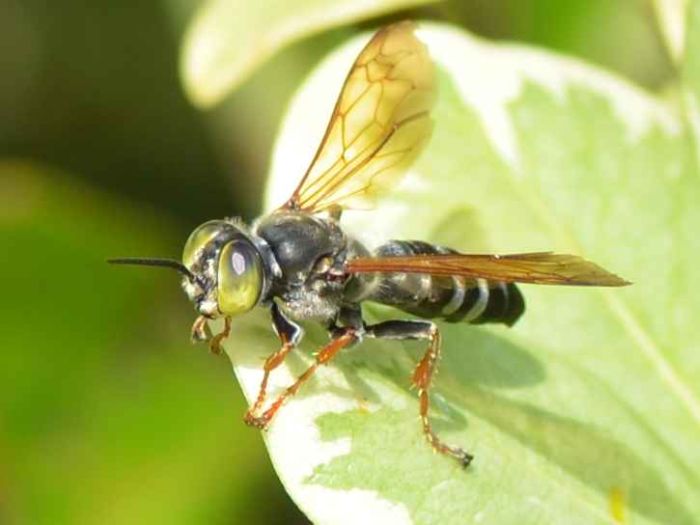 Tachytes sp. (Green-Eyed Wasp). | This green-eyed wasp belongs to the genus Tachytes which has 35 species in North America. bug guide (this photo): http://bugguide.net/node/view/556764 | ||
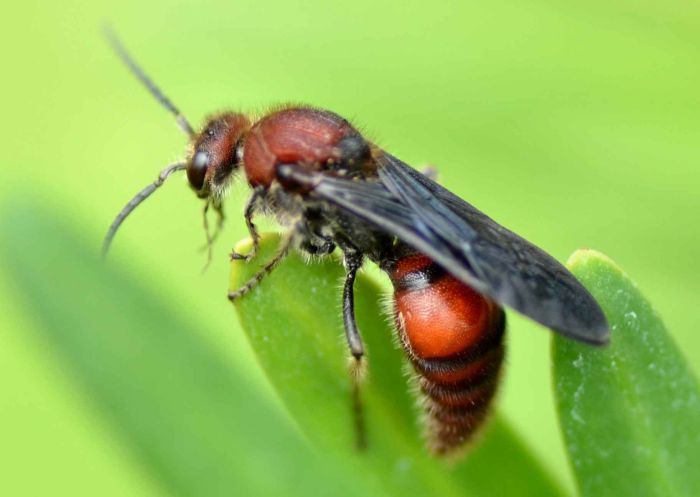 Timulla sp. (Velvet Ant) ♂. | I would have never guessed it but this is a velvet ant (Mutillidae) which is a large family of wasps. Females have no wings and are more hairy than their larger male counterparts. This one belongs to the genus Timulla. bug guide (this photo): http://bugguide.net/node/view/547315 | ||
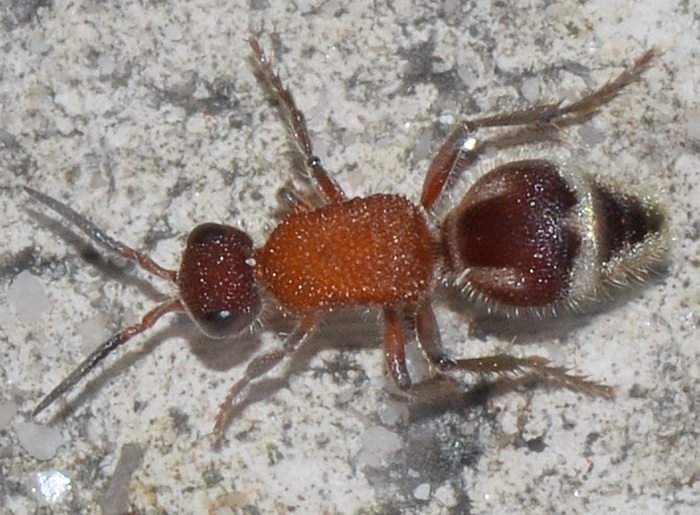 Timulla floridensis ♀. | A Floridian velvet ant. The male in the entry above could possibly be in the same species. bug guide (this photo): http://bugguide.net/node/view/1223611 | ||
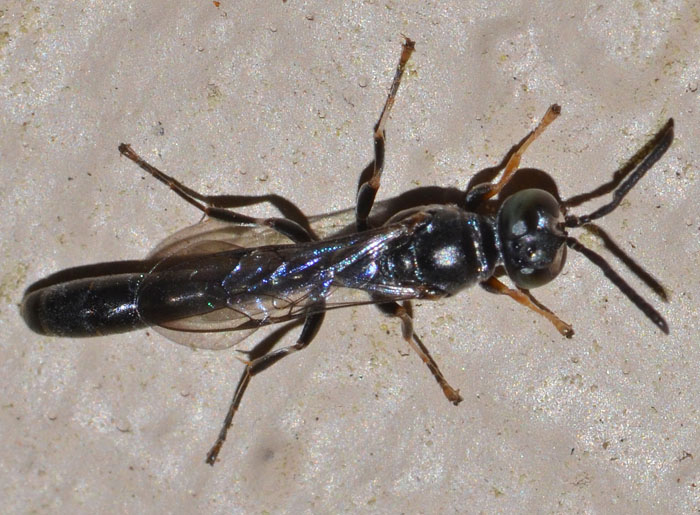 Trypoxylon sp.. | A square-headed wasp in the genus Trypoxylon which has 29 species in the US. Distinctive features are the "notched" eyes and the club-shaped abdomen.
bug guide (this photo): http://bugguide.net/node/view/1054332 |

